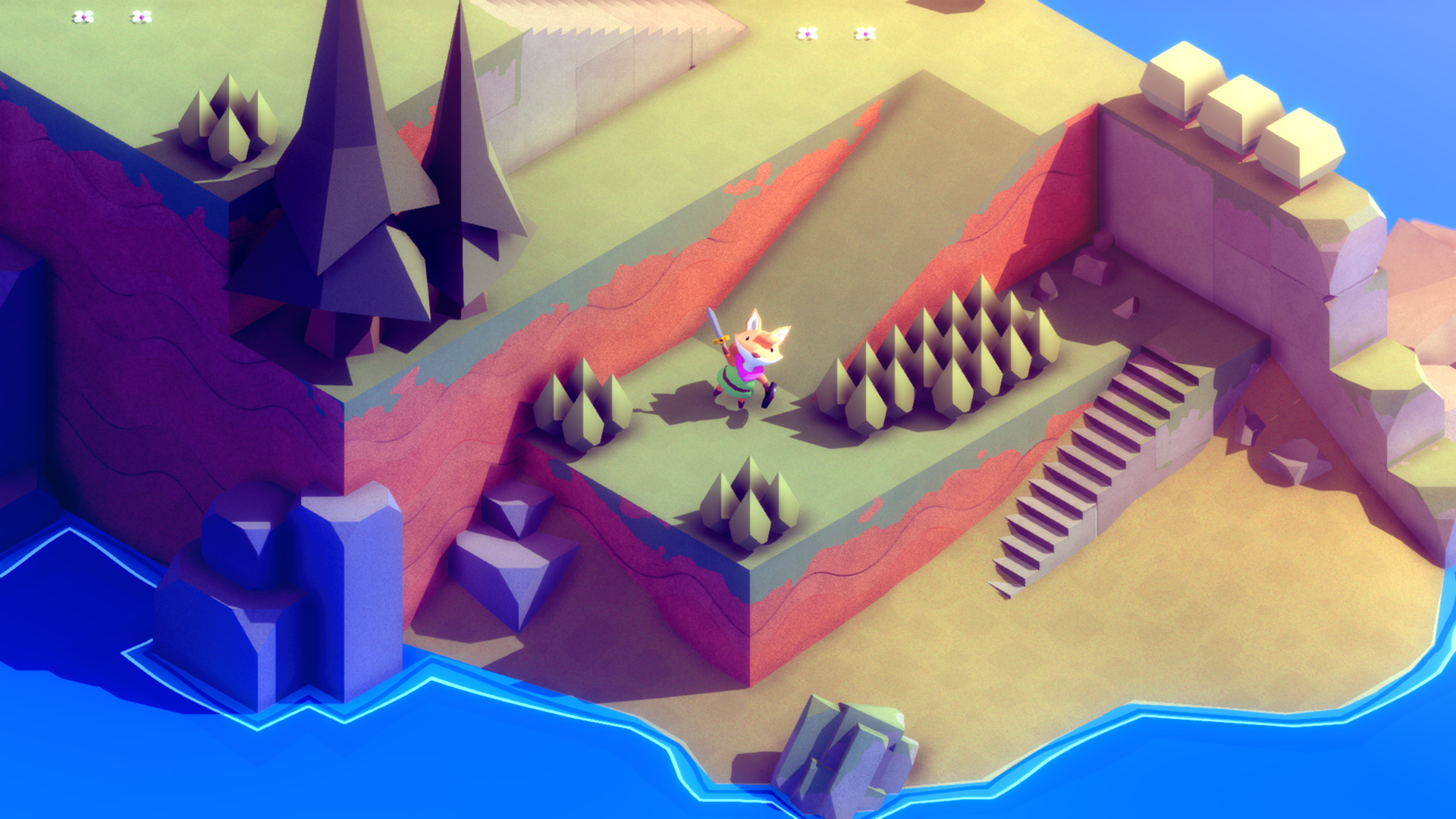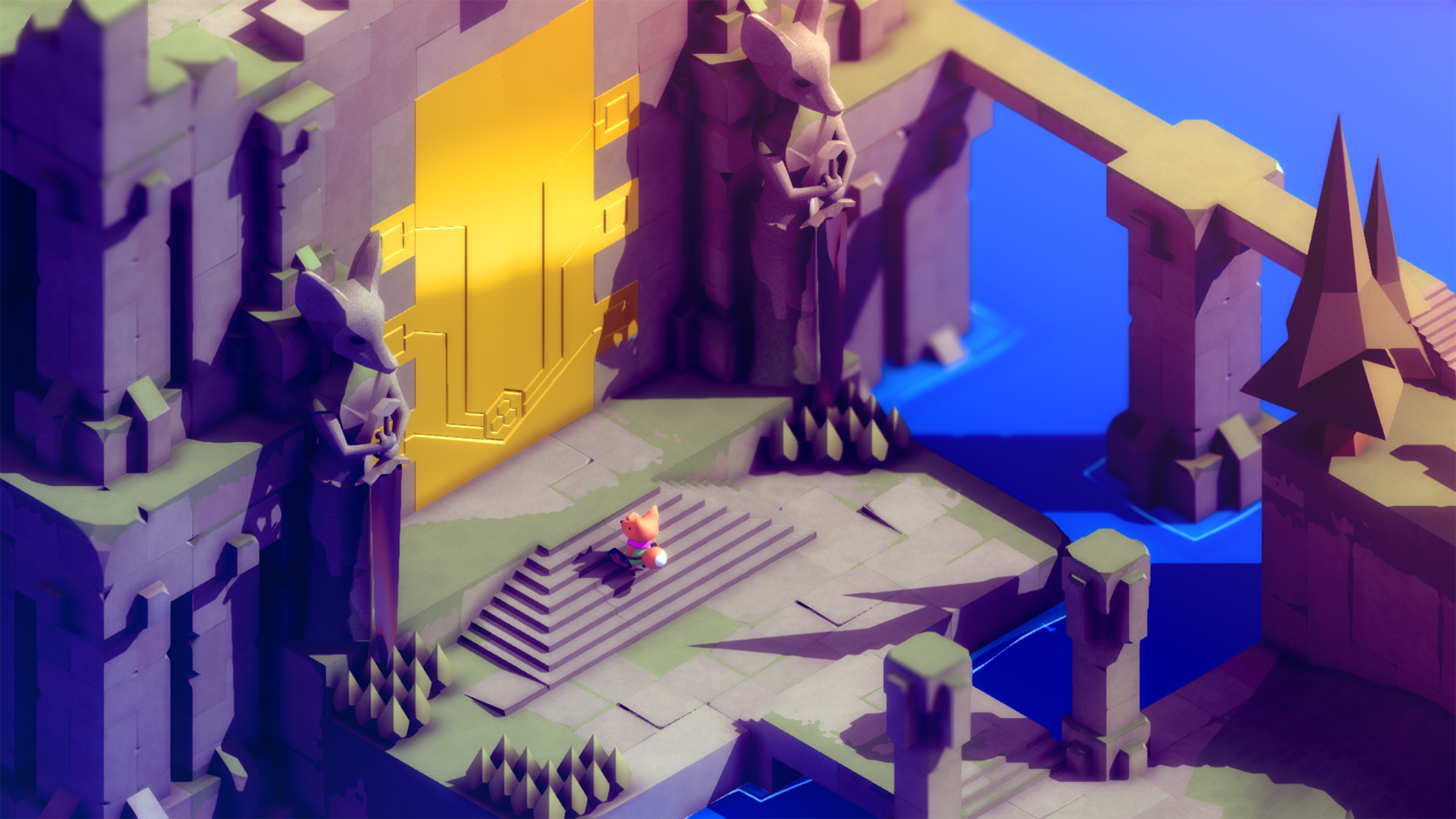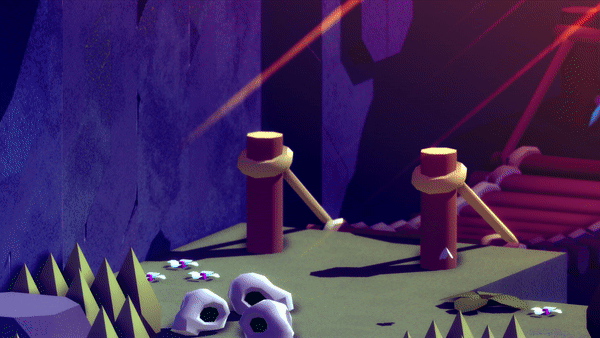Review | Tunic - The Language of Zelda
Video games are language, in the broadest of ways. Every genre is a dialect - some are extremely similar bar some local affectations, while others are so different that they don’t even share the same alphabet. Some have their own history and lineage which were developed in complete isolation and seemingly have no connections.
It is a simple question buddy.
Yet, we weird humans see patterns and similarities with them. We study them and eventually transfer our skill in one to another and become fluent in a genre once foreign to us.
Tunic is a game about language, both in the literal verbal sense and in the more metaphorical video game sense. It knows that you are fluent in the medium’s wider lexicon, you know the red bar is health and the green one is stamina. It suspects many of its players are local Legend of Zelda-ers and that in order to get past those thick shrubs you will need a sharp sword. Because of this assumed knowledge, it can be about a literal language too, signposts are written in glyphs and only a fraction of the in-game NES-style manual is in English (or French or whatever language you choose in the settings).
“Zelda Like A Fox” is still the funniest first impression I have heard about this game.
On its surface Tunic is an isometric, Zelda style, adventure game with souls-lite mechanics. It started life at the hands of its sole developer - Andrew Sholdice - as Secret Legend, a game which would take cues from a "certain classic triangle-seeking game". Since its announcement it has shown up at countless PAXs, several Xbox showcases and was brought in house by indie publisher Finji. There is another world where Tunic is nothing more than its inspirations, and my review would be fairly mundane.
“Tunic plays well, drip feeds you information in such a way you feel like you are making the discoveries for yourself, and will remind players of the good old days when games didn't hold your damn hand. It spent years in development but has turned out as a nice quaint indie darling.”
But it’s also much more than that.
Finding a manual page that doesn’t feel like posting a spoiler was way harder than I thought it would be.
I’ve written about my love of game guides before on this very site. Tunic loves guides too. It loves the manuals that told you the controls for NES games because the games themselves had no tutorials, it loves the D&D Gold Box games that gave you a pamphlet to try to condense decades of lore, and it loves PC flight sims that came with a three-ring-binder so that maybe after several hours the player might finally be able to take off. This is evident in Tunic's in-game guide. It’s the game’s key collectable and despite its lack of readable verbiage it outlines everything from the controls and mechanics most devs hide behind the scenes (like when your I-frames are active in rolls), to a story that first presents itself one way but upon further study and discovery of information is telling a totally different tale. However, Tunic also loves modern guides. Maybe not the ones every site rushes to post to answer every possible question a player could have, no matter how obvious, in order to appease the hungry SEO gods - but judging off of the game's plethora of accessibility options, I think the creators would just like to see as many people play it as possible and not care how they go about it. It loves our modern gaming landscape where players act as informed Sherpas for their friends, talking to each other and saying, "Hey, have you tried this?"
This isn't new. Plenty of games are aware they do not exist in a vacuum and demand players communicate with each other. In 2012 Fez asked players to work together to translate a language to reveal the game’s true nature, while last year Inscryption had players instructing each other on how to edit the game's code and files. But I honestly do not think any game has used the media and discussion which surrounds it to its advantage as well as Tunic. It knows I have Discord open while I play, in fact, reviewers were even asked to join a private Discord prerelease to enable this. This is a rare thing. Usually, when codes get sent out, some (not all) reviewers will reach out in quiet, tiptoeing around embargo technicalities so that they can find someone at another outlet and say, "Hey listen, sorry to bother you, but I am stuck on this one bit and I am sure I am just doing something wrong. Have you got past this part?" Publishers reinforce this by usually only sending a limited number of codes out and only to reviewers, while guide writers will sometimes only get the game at the same time as the public. But Tunic knows that this is not how anyone will play it in 2022. Yes, the game is for the most part very good at vaguely gesturing where you should go next and what you should do, but it also knows no single player is an omnipotent being with limitless time on their hands to figure out all its mysteries on their own.
No way forward.
A friend of mine posted in a Discord the other day that they were trying to run through Tunic for a review and felt it was too opaque. They, as I did at several points, missed one of the game’s very subtle breadcrumbs and as a result, like me, spent a good hour and a bit wandering the overworld getting frustrated. There is one particular step in the main quest, which as far as I can tell has no signposting. You could argue from a thematic point of view it would make sense for you, taking on the role of a fox, to go and do this, but in a game where your little fox is speechless it’s hard to take a beat and ask "what would this little dude do after going through all that crap". As far as I can tell, at this point, Tunic expects you to Google where to go next. More specifically it expects you to ask a friend. The most answered question in the reviewers’ Discord was directing lost players at this exact point. Someone in there figured out this quest step and then slowly, so did all the rest of us. We didn't fail and have to ask for help. We didn't get lost. We didn't get stuck. We talked.
Tunic doesn't expect you to do this all on your own. The world is big and scary and hard as nails at times.
It's dangerous to go alone. Take this.











